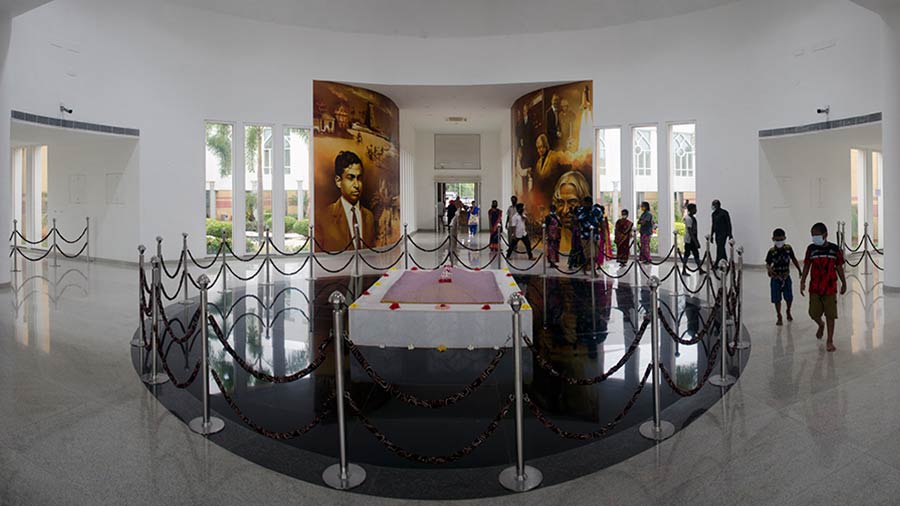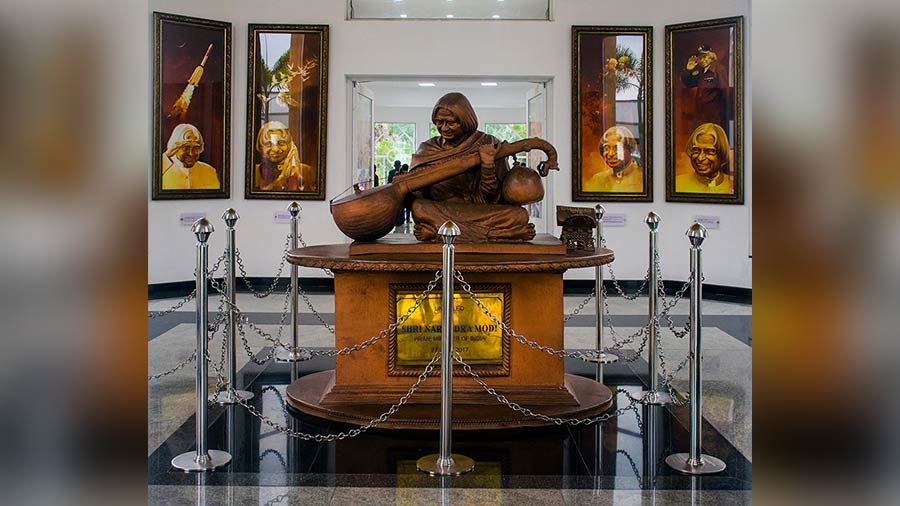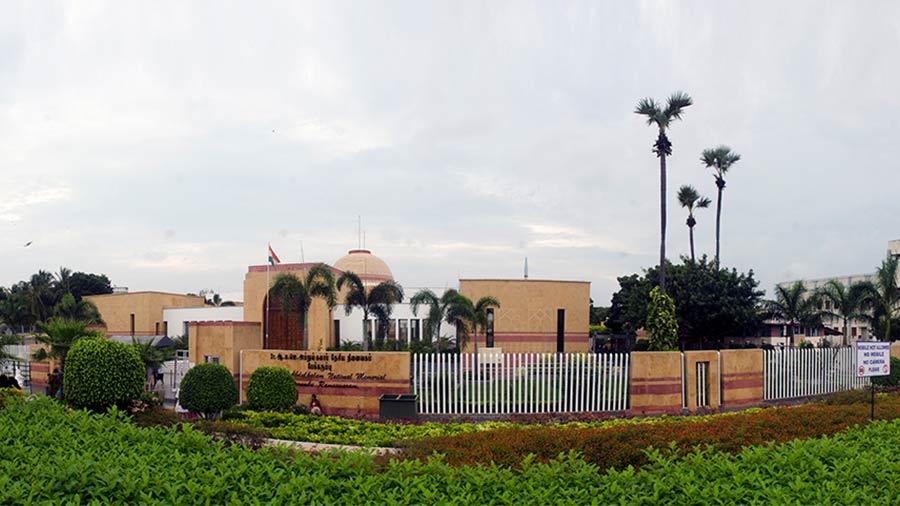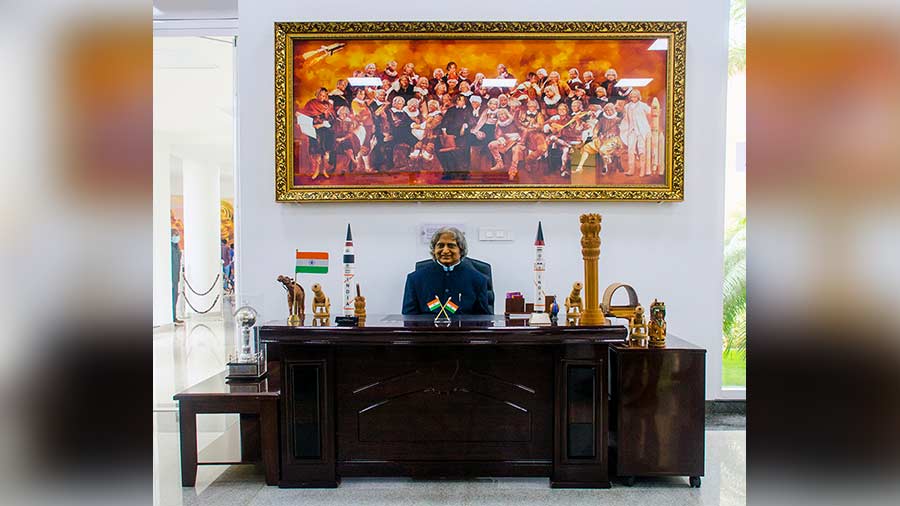On July 27, 2015, while delivering a lecture at IIM Shillong, Dr. A.P.J. Abdul Kalam collapsed after suffering a cardiac arrest that led to his death at the age of 83. The 11th President of India was laid to rest in Rameswaram, near his native village of Dhanuskodi in a simple grave. Today, a memorial built at the site in 2017, honours and commemorates the life of the ‘Missile Man of India’.

Kalam’s grave inside the memorial
Humble beginnings to soaring heights
Born and brought up in Rameswaram, off the coast of Tamil Nadu, Kalam came from a very humble background. His father was a boat man and the imam of a local mosque. An excellent student, Avul Pakir Jainulabdeen Abdul Kalam went on to study aerospace engineering at the Madras Institute of Technology (MIT). Later, Kalam played an active part in designing missiles for the Defence Research and Development Organisation (DRDO). His work gave him the moniker of India’s ‘missile man.’
In 2002, he was elected the President of India and came to be known and loved as the “people’s president.”

It is a well-known fact that Kalam loved to play the veena, a skill he learnt as a child
In memoriam
On the first anniversary of his death, the foundation stone of a memorial for Kalam was laid near his grave. The DRDO, where he spent a good part of his life and career, undertook the task of building a memorial and a year later, on his second death anniversary, the building was inaugurated by Prime Minister Narendra Modi.
Spread over an area of two acres, the memorial building has many architectural features in common with the Rashtrapati Bhavan in Delhi, including a central dome. The four corners house galleries and a huge Chettinad-style wooden gateway at the end of a long flight of stairs welcomes visitors inside. A pathway lined with paintings and photos of the president leads to the central gallery, just under the dome where a statue of Kalam playing the veena has been installed.

The memorial, a project undertaken by the DRDO, is spread over two acres
The four corner galleries have installations with figurines of Kalam that recreate moments from his life — his stay at Rashtrapati Bhavan, the UN Assembly address, and his association with DRDO and ISRO (Indian Space Research Organisation).
There are also lighter moments, such as Kalam’s interaction with students of various ages — a task he is said to have always been enthusiastic about. There is also the scene from his last lecture at IIM Shillong.
Kalam’s grave lies at the northern end of the memorial and is enclosed inside a circular chamber. The simple site has his full name, along with his date of birth and death, written in English and Tamil. Throughout the memorial, the walls have many photographs of Kalam and a small exhibit shows the items carried by him on his journey to Shillong.

Another installation of Kalam
The outdoor space around the memorial building has a garden with manicured lawns and flowerbeds, and pathways flanked by several installations including models of missiles designed by Kalam.
The memorial stands as a true tribute to a man who has inspired a generation of students. A quote from the people’s president displayed at the entrance says a lot about Abdul Kalam — ‘Dreams is not that which you see while sleeping, it is something that does not let you sleep.’
Travel details:
- Timings: 8am to 6pm
- There is no entry fee
- Shoes have to be removed to enter the memorial
(Photography inside the memorial is strictly prohibited. The photographs in the article were taken with prior special permission.)
